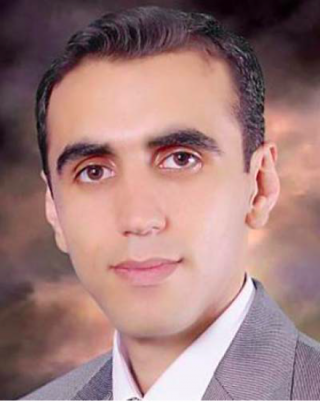Omid Kavehei
Simon Rockliff Scholarship (2010)
Research Abroad Scholarship (2010)
World Class University Fellowship (2009)
World Class University Fellowship (2010)
Young Nanotechnology Ambassador (2011) |
| Omid Kavehei | ||||
|---|---|---|---|---|
 {{#if: | {{#if: |
| ||||
| Person_Name: | Omid Kavehei
}} | |||
| Birth_Date: | 1981
}} | |||
| Birth_Place: | Arak, Iran
}} | |||
| Death_Date: |
}} | |||
| Death_Place: |
}} | |||
| Fields: | Neuromorphic engineering, VLSI, biomedical devices, memristors, memory, nanoelectronics
}} | |||
| Workplaces: | University of Melbourne
}} | |||
| High_School: |
}} | |||
| Undergrad_University: | Azad University of Arak
}} | |||
| Undergrad_Degree: | Computer System Engineering (2003)
}} | |||
| Project_Advisors: | Keivan Navi
}} | |||
| Masters_University: | Shahid Beheshti University
}} | |||
| Masters_Degree: | Computer Systems Architecture Engineering (2005)
}} | |||
| Masters_Advisors: | Keivan Navi
}} | |||
| Doctoral_University: | University of Adelaide
}} | |||
| Doctoral_Degree: | Electrical & Electronic Engineering (2012)
}} | |||
| Doctoral_Advisors: | Said F. Al-Sarawi and Derek Abbott
}} | |||
| Awards : | D. R. Stranks Travelling Fellowship (2009) Simon Rockliff Scholarship (2010) | |||
Omid Kavehei was born in Arak, Iran, in 1981. From 1999 to 2003, he was educated at Azad University of Arak, in his hometown, where he obtained a Bachelor’s Degree in Computer System Engineering with the highest rank in that year. His final year research project was carried out under Keivan Navi on Current-Mode Computing. Soon after graduating, he joined the Microelectronics group at the Shahid Beheshti University (formerly National University of Iran), Tehran, Iran, in 2003. He obtained his Master’s Degree in Computer Systems Architecture Engineering again with highest rank, under Keivan Navi on Very Large Scale Integration (VLSI) Design Aspects of Arithmetic Circuits: Adders, Compressors, and Multipliers. He also carried out several research projects on system-on-chip, digital signal processing, analogue computing, operating systems, and bioinformatics. He served at his alma mater as a research and teaching assistant and a casual lecturer. In this role, he conducted VLSI Design course and Digital Logic Design Labs in the Department of Computer Engineering.
In 2008, he was granted an Australian Endeavour International Postgraduate Research Scholarship (EIPRS) and University of Adelaide Scholarship to pursue his PhD under Said F. Al-Sarawi and Derek Abbott, the School of Electrical & Electronic Engineering, The University of Adelaide. In 2009 and 2010, he was a Visiting Scholar at the Technology Park, the Chungbuk National University, South Korea, hosted by Kamran Eshraghian. During his candidature, Kavehei received a D. R. Stranks Travelling Fellowship, 2009, Simon Rockliff Scholarship for the most outstanding postgraduate mentorship from the School of Electrical & Electronic Engineering and DSTO, 2010, Research Abroad Scholarship, 2010, and the Korea’s World Class University program research fellowships, 2009 and 2010. He was also a student member of the IEEE, IEEE Communications Society, the Institution of Engineers Australia, Australasian Association for Engineering Education, WCU (KOSEF) project member, and an executive member of the SA IEEE student chapter called the Electrical and Electronic Engineering Society of Adelaide University. In 2011, he received the Young Nanotechnology Ambassador award fromm the ARC Australian Nanotechnology Network.
Bachelor's Degree
- Computer System Engineering (2003), Azad University of Arak, Iran
- Project: Current-Mode Computing, under Keivan Navi
Master's Degree
- Computer Systems Architecture Engineering (2005), Shahid Beheshti University, Iran
- Thesis: Very Large Scale Integration (VLSI) Design Aspects of Arithmetic Circuits: Adders, Compressors, and Multipliers, under Keivan Navi
Doctoral Degree
- Electrical & Electronic Engineering (2012), University of Adelaide, Australia
- Thesis: Memristive Devices and Circuits for Computing, Memory, and Neuromorphic Applications, under Said F. Al-Sarawi and Derek Abbott
Postdoctoral Positions
- 2012 Postdoctoral Research Fellow at the University of Melbourne and Bionic Vision Australia
Awards
- Endeavour International Postgraduate Research Scholarship, Australia (2008)
- D. R. Stranks Travelling Fellowship, Australia (2009)
- Simon Rockliff Scholarship, Australia (2010)
- Research Abroad Scholarship, Australia (2010)
- World Class University Fellowship, Korea (2009)
- World Class University Fellowship, Korea (2010)
- Young Nanotechnology Ambassador, Australia (2011)
Scientific Genealogy
Google Scholar Profile
Journal Articles
[1] K. Eshraghian, O. Kavehei, J. M. Chappell, A. Iqbal, S. Al-Sarawi, and D. Abbott, "Memristive device fundamentals and modeling: Applications to circuits and systems simulation," Proceedings of the IEEE, Vol. 100, No. 6, 2012, pp. 1991–2007, http://dx.doi.org/10.1109/JPROC.2012.2188770
[2] O. Kavehei, S. Al-Sarawi, K. R. Cho, K. Eshraghian, and D. Abbott, "An analytical approach for memristive nanoarchitectures," IEEE Transactions on Nanotechnology, Vol. 11, No. 2, pp. 374–385, 2012, http://dx.doi.org/10.1109/TNANO.2011.2174802
[3] K. Eshraghian, K.-R. Cho, O. Kavehei, S. M.-S. Kang, and D. Abbott, "Memristor MOS Content Addressable Memory (MCAM): Hybrid architecture for future high performance search engines," IEEE Trans. Very Large Scale Integration (VLSI) Systems, Vol. 9, No. 8, pp. 1407–1417, 2011, http://dx.doi.org/10.1109/TVLSI.2010.2049867
[4] O. Kavehei, A. Iqbal, Y. S. Kim. K. Eshraghian, S. F. Al-sarawi, and D. Abbott, "The fourth element: characteristics, modelling and electromagnetic theory of the memristor," Proceedings of the Royal Society A, Vol. 466, No. 2120, pp. 2175–2202, 2010.
Conference Articles
External Links
- Kavehei's Scholar Google profile
- Kavehei's TED profile
- Kavehei's ANN profile
- Kavehei's Frontiers profile
- Kavehei's DLBP profile